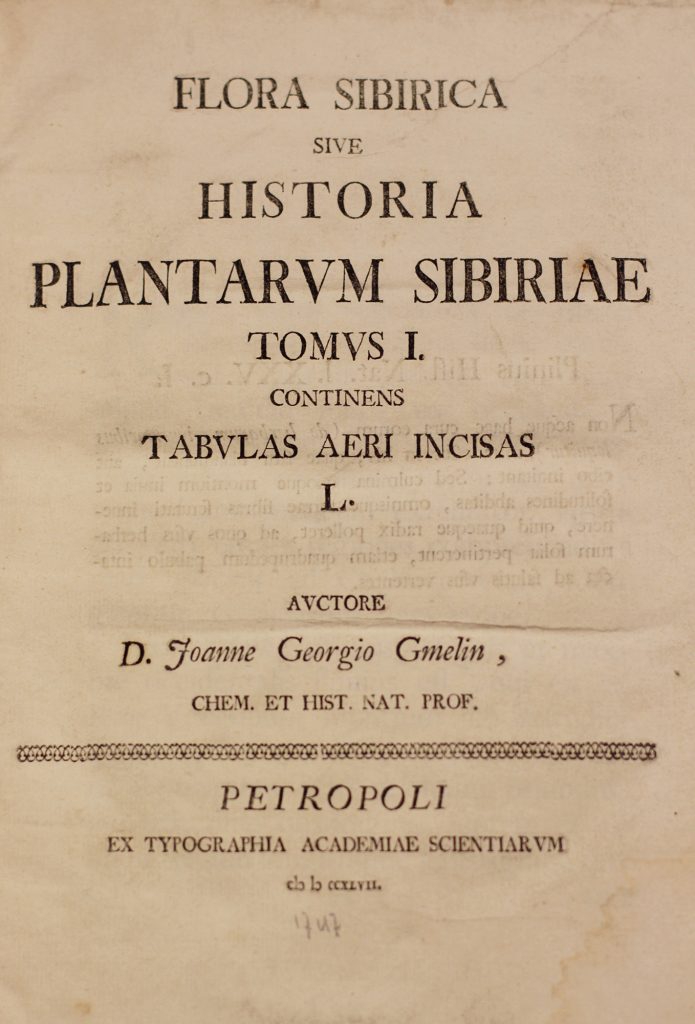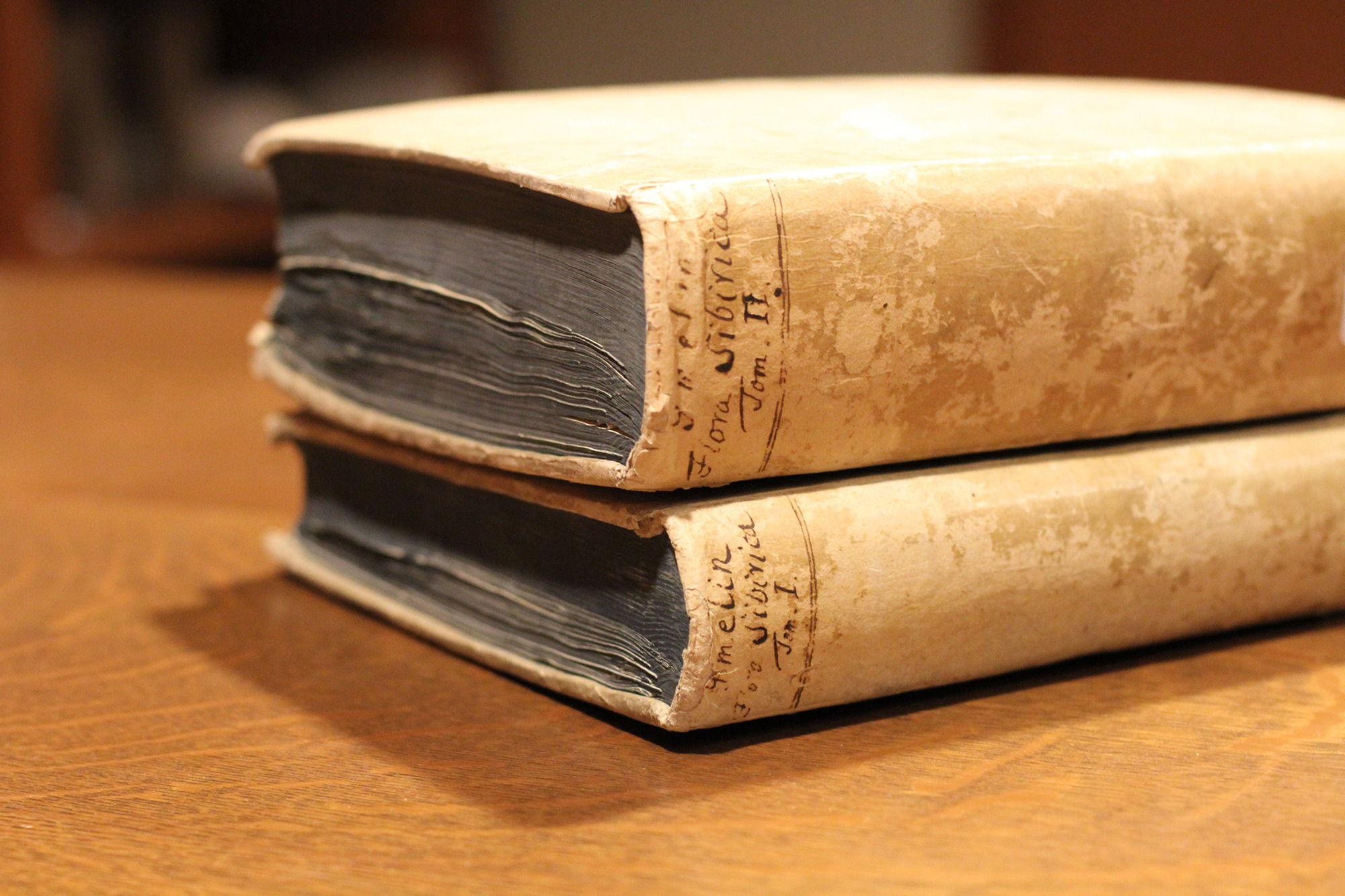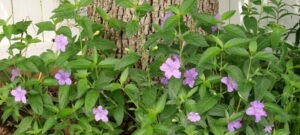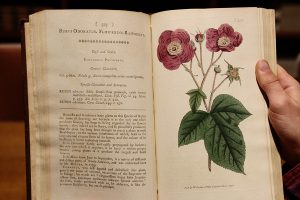In our year-long “Hidden Treasures” series, Alyssa B. Young, Special Collections Librarian, features notable works in the BRIT rare book collection.
As you look through the shelves in our rare book room, you see rows and rows of beautifully-bound books. They have bindings of leather and vellum, ornate embossed and gilded decorations on the covers and spines.
Two volumes stand out. Their bindings appear to be of tough cloth or paper, showing age more than the leather-bound neighbors. The front and back covers have no design or text. The spine is simple, with the titles handwritten in a delicate ink script: Flora Sibirica.

Throughout the 1700s, the Russian Academy of Arts and Sciences in St. Petersburg funded a series of large-scale scientific explorations throughout Russia. Johann Georg Gmelin (1709-1755) was an esteemed member of German academic society. After receiving a medical degree at the young age of 18, Gmelin moved to St. Petersburg. He became a professor of chemistry and natural history at the Academy in 1728.
Gmelin embarked on Vitus Bering’s Second Kamchatka Expedition (1731-1742), which resulted in the publication of his Flora Sibirica. The expedition involved 600 people, and Gmelin was one of the three professors from the Academy leading the observations. He later explained the goal of the voyage assigned by the Russian government was “generally to learn everything that has scientific interest.” This included describing the natural and societal history of Siberia.

Flora Sibirica was published in four volumes, 1747-1769. The final two volumes were published after Gmelin’s 1755 death and were completed by his nephew. The BRIT rare book room houses the first three volumes.
Before the invention of bookbinding machines in the latter half of the 19th Century, nearly all binding was a custom process. Publishers sold the pages of the book to the customer directly, who was then responsible for having the pages bound together. The customer would hire a bookbinder of their choice to create a binding, the design of which was dictated by their financial and aesthetic preferences. This leads to the great variety of binding techniques and styles we see in our library. BRIT’s Flora Sibirica is an extraordinarily simple binding. We believe this is the original binding, meaning the customer who purchased this book in 1747 chose the design.
We can let our imaginations wander with ideas explaining this choice. Perhaps the customer preferred to concentrate on the contents of the books rather than the exterior. Perhaps they couldn’t afford a more elaborate design. Or maybe they enjoyed the look of this binding, beautiful in its simplicity. (If the latter is the case, I am in agreement!)
The interesting binding choices don’t stop there: the edges have been dyed a beautiful, rich blue color. This would also have been done by the binder – before attaching the cover and spine, the binder sews the pages together at the binding end, trims the outer edges, and occasionally adds edge decorations.






